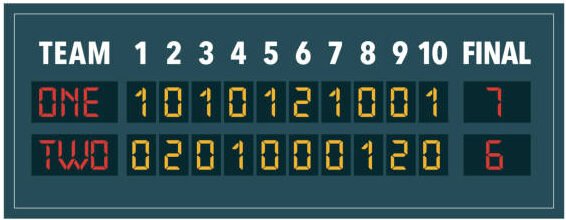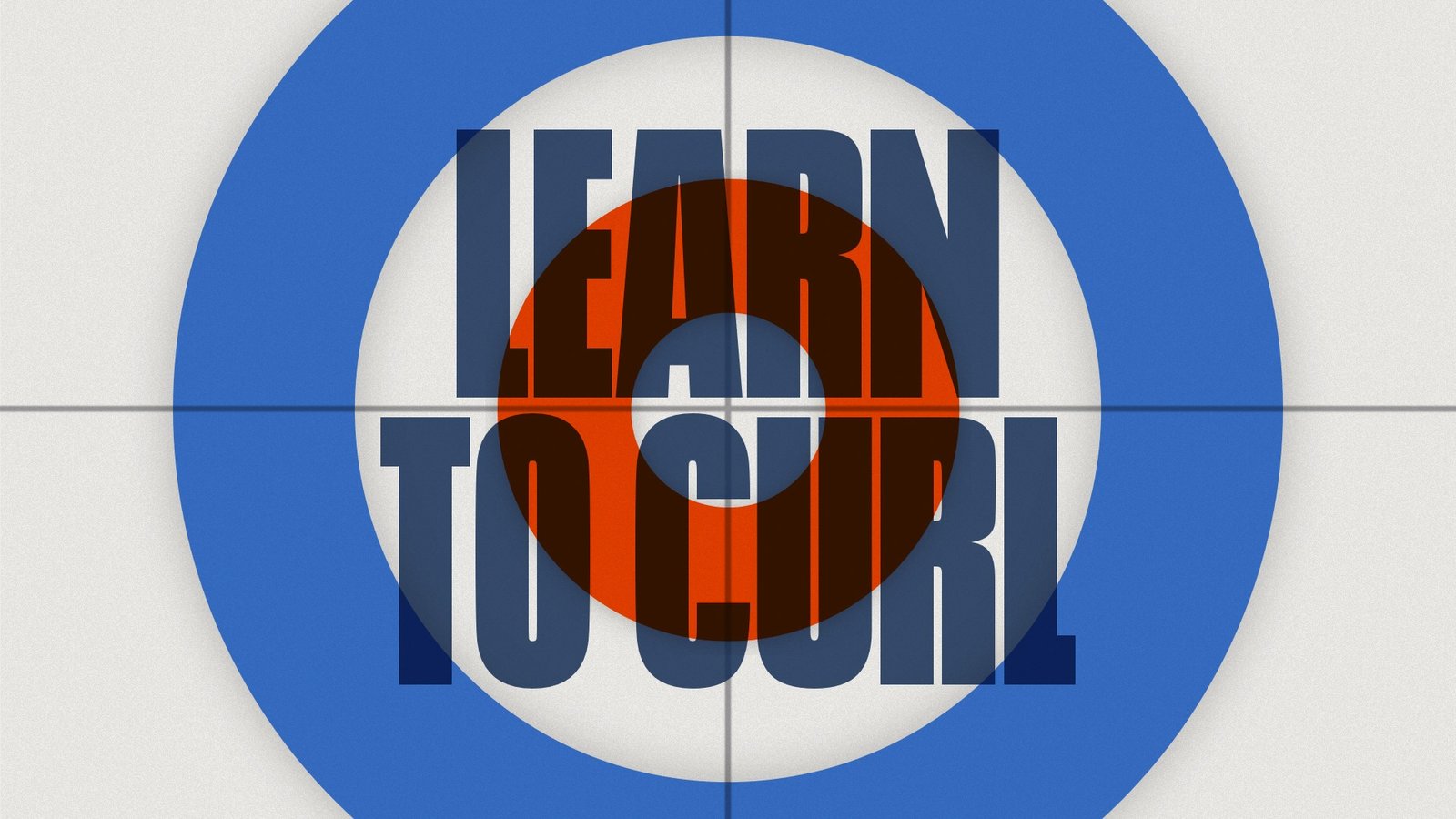Once you understand how to score points in curling, the next step is to be able to read the scoreboard. This is something that takes a bit of time to get used to, especially as there are two different ways that scoreboards work in this sport. Below we will explain both of them, which we will refer to as “Ends On Top” and “Points In The Middle”.
The first example is the type of scoreboard you will see if you are watching the Olympics or a high-level curling competition such as the Brier or the Scotties. These scoreboards have the “Ends On Top” which are shown below in white numbers. Remember that in curling, only one team can score in each end. This means that there will always be a “0” for at least one of the teams in each end. If the end is a blank end, then both teams would have a “0”.

This style of scoreboard is perhaps the easiest to read, as the number underneath each end simply shows how many points that team scored in the end. Add up all of the points in each row and that gives you the total score, shown above as 7-6 for the final of this game.
However, in most curling clubs these “Ends On Top” scoreboards are not used. This is because most rinks still use wooden or metal boards, and are not equipped with digital ones. Therefore, you’d need to be prepared with at least 10 of each number (especially 0’s, 1’s, and 2’s) to place underneath each end. Considering that some rinks have many sheets of ice, this is not realistic.
Instead, most curling rinks with traditional boards use the “Points In The Middle” system shown in the image below. Here, the numbers place in the Yellow & Red zones are the ends, placed above/below the points.

So in this example, Yellow scored 1 point in the first end and so the number 1 goes above the “1 Point” listed in the middle row. Then in the second end Red scored 3, so the number 2 (for the second end) goes below the “3 Point” marker. When Yellow score in end 3, this gets added to their existing point and so the number 3 (for the third end) goes above their new total, 4 points. This means that whichever team is “further along” the board is winning the game. In our example:
1st end: Yellow score 1
2nd end: Red score 3
3rd end: Yellow score 3
4th end: Red score 1
5th end: Yellow score 1
6th end: Red score 1
7th end: Yellow score 1
8th end: Yellow score 2
9th end: Red score 1
Final Score: Yellow 8 v Red 6
For more on curling terminology, visit our glossary page!
Hopefully you might like to come and give curling a try.
For a one-off session, visit our Try Curling page to book a two hour session for yourself, or bring friends and family.
Alternatively, you could book a place on one of our Learn To Curl courses which run over a series of 4 weekly two hour sessions.


